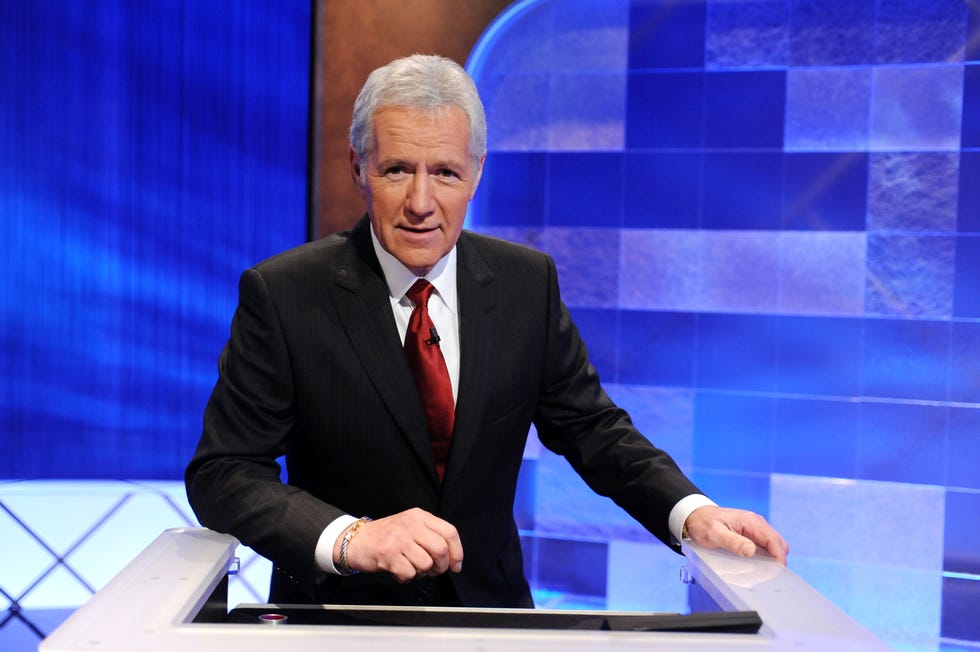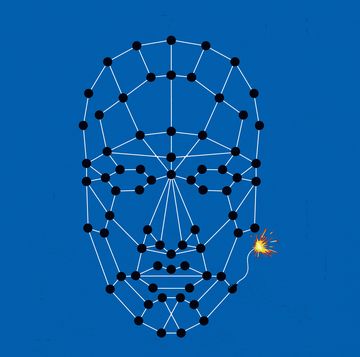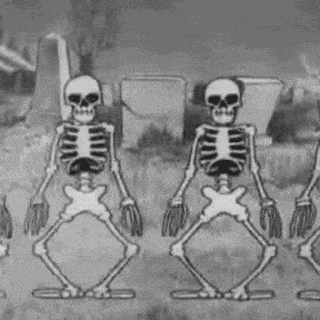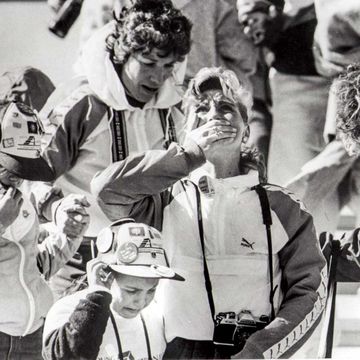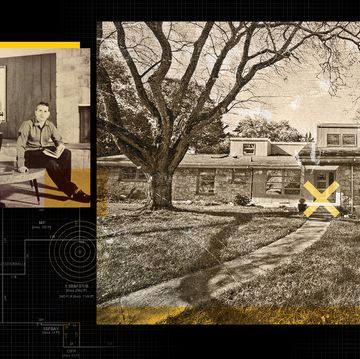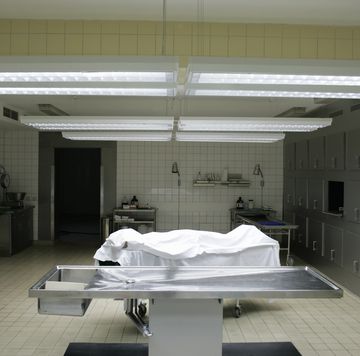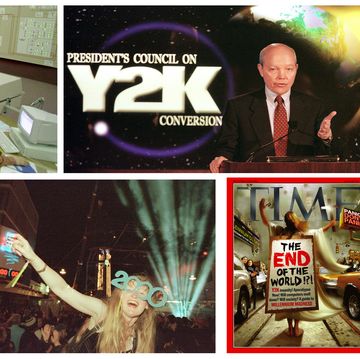Jeopardy! has been on the air, in one form or another, since the 1960s. The modern Alex Trebek-hosted incarnation of the show—whose famous theme song is now in your head (sorry!)—began in 1984 and still airs about 230 episodes every year.
There is an art to a Jeopardy! clue. Its answers-in-search-of-questions exude a certain tone and tenor that’s different from trivia offerings from Who Wants to Be a Millionaire, HQ, The Weakest Link, or even a throwback like You Bet Your Life. But the writer’s room is also a factory, one that must churn out 61 clues per episode, which adds up to hundreds of thousands of clues aired during the show’s long run.
Billy Wisse joined the show 28 years ago and worked his way through the ranks, first as a researcher, then as a writer. Wisse, who has been the head Jeopardy! writer for the past seven years, walks us through how to think about a clue, and what goes into an episode of "America’s Favorite Quiz Show."
The Spark of an Idea
“There’s a saying in quiz shows,” Wisse says, “that a good question has to get one of three reactions: ‘I knew that,’ or ‘darn I should have known that,’ or ‘I didn’t know that, but now I’m glad I do.’ That’s basically what we’re looking for.”
He oversees a staff of eight writers. Another eight researchers to double-check the facts. Researchers ensure that the facts are independently verified, and that spellings and other details are correct. This usually requires two or more independent sources per question. Both the researchers and writers work on what is called “pinning” in the jargon of Jeopardy!. Pinning means sorting out that there is for sure only one possible answer. Of course, sometimes as we’ve seen in the show, the judges will accept one of two answers, but that’s the upper ceiling of multiple choices.
“If you find that there are half a dozen other rodents also acceptable based on that description you gave of that one squirrel, then you need to rewrite the clue and tighten it up so it’s just the one squirrel,” Wisse says. “Pinning is really a tricky thing [...] in my experience, I would not have thought it was such a problem, but there are an amazing number of facts and qualities and assertions that apply to many different kinds of the same thing.”
The spark of an idea might come from anywhere—current events, a chance event—but once it does, the writer is responsible for writing that out into a whole category. Thankfully, there are thousands upon thousands of books in the Jeopardy! library, stretching back to the Art Fleming era, though Wisse admits there’s still plenty of Internet research that goes into your average question. Still, travel guides and textbooks are regularly updated to ensure they aren’t too out of date.
Wisse oversees the order of the questions, though the writers do sometimes end up in contentious debates over that order. “We hash it out, and hopefully you put the easiest clue at the top,” Wisse says. “The number one should never really be missed, and when it is, it’s annoying.”
True Clue
How does a clue get made? I ask Wisse to talk us through one in particular.
The episode in question aired on July 4, 2000. The category is “Let’s Have a Ball.” The clue: “Sink it and you’ve scratched.”
Did you get it? The answer (or the question, rather) is, “What is the cue ball.”
The other clues in this category are somewhat more straightforward. For $200, “This demolition tool swings from a cable attached to a crane” (a wrecking ball). For $400, “It's a naphthalene sphere to repel a lepidopteran” (a moth ball.) “Sink it and you’ve scratched,” was the $100 clue, but it has a little more guile to it than the others, Wisse says.
“In that category, the title is ‘let’s have a ball.’ The nice thing about having [a] category title that gives that much information is that then you can have shorter clues,” Wisse says. “If that category was just in a more random category, like ‘games’ or something like that, it would be tougher. But since you’re already telling them it’s a category about balls, you can have a short clue and the information needed is still going to be conveyed.” There’s a little more flexibility to be clever or coy.
Then there are the core subjects Trebek reliably revisits—Shakespeare, the dreaded opera category, geography. On October 17, 2017, the show aired what The Ringer called “The worst game in Jeopardy! History” after the winner walked away with a single dollar. All three players whiffed on the Final Jeopardy clue: “It’s the only country that borders both the Caspian Sea and the Persian Gulf.” One contestant responded with “What is Tibet,” which is not an independent country and far from the Caspian Sea. Another guessed Azerbaijan, which borders only the Caspian. Manny Abell bet $999 on the response “What is Iraq?”
He was one letter off. The answer was Iran. At least he saved that last dollar.
“In geography, obviously, there are only so many places so we do end up covering the same ground regularly,” Wisse says. “Where we can we try to find an interesting fact if something has come into the news.”
Categories within the arts often stay relatively the same. Unless a new fact emerges, a piece of literature or other work isn’t going to change much. “Sometimes we’ll have a glut of anagrams or Shakespeare or something, and those will sit around for literally years,” Wisse says. “It sort of depends on what the needs are of the material at any given time.” But science questions tend to be updated more regularly, as science is ever-changing. Statistics, facts, and figures tend to move over time as more data accumulates. This is why the writer’s room also keeps their science book supply regularly updated.
Weirdly, “What is Popular Mechanics?” was a recent correct response, though Wisse says that clue is a couple years old, so it’s entirely coincidental to our interview.
Betting Big
Three Daily Doubles lurk during each episode. Strategically minded fans know these are make-or-break moments. Wager aggressively, answer correctly and you can jump ahead in the game. Go big and get it wrong and you’re way in the back of the pack.
When Wisse and the writers choose one of the clues in a round (or two in the second round) to be a Daily Double, they’re looking for something that stands our from its category, a clue with a higher degree of difficulty or a bit of a twist to it. When a player is laying extra money on the line, he or she should be get a challenge.
“Maybe you have to have another piece of knowledge to get you to what we’re going for, rather than just ‘do I know that or do I not,’” Wisse says. “They’re not always clues that lend themselves to that, but that’s the theory of a Daily Double.”
The very last question in a game—Final Jeopardy—has an art to it, and are written separately from the rest of the game. They’re also debated among the writing team in their own special meetings. “Everybody is always writing Final Jeopardies, and we’ll have a whole separate meeting where we’ll go over Final Jeopardies and figure out if they’re too hard or too easy, if they need to be tweaked.”
Those Final Jeopardies then go on to executive producer Harry Friedman to approval before they can be cycled into the regular writing of a game. The writers, relatively complete Final Jeopardies in hand, are then chosen for their uniqueness when contrasted with the rest of the game that day. This is the final assembly on the part of the writers before the episode moves on to the next step.
“If you have a history category in Double Jeopardy, you probably won’t have a history category in final,” Wisse says. “We try to balance the game and have the Final Jeopardy be on something else that the game is not heavy in.”
So what if—theoretically—everyone goes into Final Jeopardy with a negative score? The Jeopardy! website states, “In the event all three contestants have $0 (zero) or minus amounts at the end of Double Jeopardy , no Final Jeopardy round would be played.” But this has never happened, so the rule has yet to be put to the test, and the site suggests that they might make up a rule on the fly should this happen.
There has been a Final Jeopardy with just one contestant. It was … awkward.
Then there’s Celebrity Jeopardy. (No, not the Saturday Night Live skit. The real thing.) Sometimes it’s written with a little more cunning and fun. One episode with Pat Sajak required celebs to combine singer and president names into a cohesive name. (“"B-B-B-B-Bennie!" Bennie Franklin! You & I negotiated peace with Britain in the 1780s.” Correct response: “Who is Elton John Adams?”) This is also when, for instance, Wisse and his writers have inserted a category with different clues but the same answer—sometimes with one just a little bit different. (Though this has also happened in normal Jeopardy! as well.)
Wisse says part of this intentional tomfoolery is because the celebrities don’t have as much to lose. “In celebrity games, you don’t want to trick the celebrities, but you can be playful because they’re playing for charity so you’re not going to mess with anyone’s livelihood,” he says.
No Chicanery
Once the Jeopardy! team has assembled an entire game, the whole thing goes into a “black box” of sorts at the Compliance and Practices division, which uses an outside company to ensure maximum fairness to the contestants. Wisse says this happens to eliminate any appearance of “chicanery,” the sort of rigged quiz games of yore. In the 1950s, the game show Twenty One was discovered to be rigged, resulting in a lengthy and public fallout that went all the way to Congress and was fictionalized in the 1994 movie Quiz Show.
Compliance and Practices sends back a randomly selected game for the day and a list of contestants. They also sit in on filming to ensure fairness if a question proves controversial or to have more than one answer.
“There are only a certain number of people showing up that day, but they randomly select which contestants are going to play which games, so there’s no linkage between any of the material. then, the person who’s there all through shooting, so if there’s alternate answer that we have to accept or reject, it’s done in a way that’s fair to all three contestants.
Jeopardy! isn’t filmed every day. The crew shoots five episodes at a time, two days per week, from July to April. This is when Trebek is around the office, working 7 a.m. to the end of filming. The writers are on stand-by in case any last minute conflicts arise. Trebek has a final veto of every question that goes into the show.
“He’ll often ask that a clue be reworded,” Wisse says. “He’ll sometimes say that a clue is in questionable taste or derogatory toward someone, and he doesn’t want to do it. He’s fairly sensitive to that.”
Perhaps surprisingly, given the intensive production schedule that requires up to 13,800 clues and 230 Final Jeopardies per season, is that there’s not much overtime to the job. At the end of film days, the writers and researchers may go over the episode in a given day and figure out any room for improvement in the future. There’s no real chaos, no late night meetings. When I first called Wisse, he was just on his way to work, waiting to arrive by 9 a.m. and put in his eight hours.
“We’re very lucky,” he says, “we’ve got a pretty good routine day. Toward the end of the taping year, when we’re putting materials together closer to when we’re taping it, we put in 9 or 10 hour days, but otherwise it’s a 9 to 5 job.”


